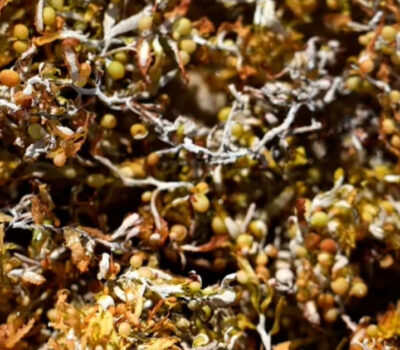Like many of Mexico’s most beloved dishes, the exact origin of the popular stew called tinga is subject to a debate as fiery as the chiles that go in it. Proud pueblanos insist tinga is theirs; others say its real roots are in Oaxaca. But after one taste you won’t really care about where it came from —just how you can get more.
12 dried chiles meco or morita, stemmed, seeded, veins removed (you can also substitute with canned chipotles)
5 Roma tomatoes
1 yellow onion, peeled, cut in half
6 garlic cloves, unpeeled
1 tsp ground cinnamon
Salt, to taste
1 1/2 lb cooked, shredded pork meat (leftovers are perfect)
3 T plus 2 cups canola oil
6 to 8 6-inch corn tortillas
For garnishes:
½ cup cotija cheese
1 cup romaine lettuce leaves, thinly sliced or shredded
2 or 3 radishes, thinly sliced radish
½ cup Mexican crema or sour cream
DIRECTIONS
Start by dry-roasting the vegetables on a comal or a cast iron skillet over high heat. Toast the whole chiles for about 5 to 7 minutes, turning over, until they are fragrant, pliable and lightly blistered. Put them into large bowl and cover them with boiling water. Allow to soak for no more than 15 minutes, until the chiles are fully rehydrated.
Drain, set chiles aside and reserve the soaking water.
Next, on the same comal or skillet, roast the rest of the vegetables: the tomatoes whole, until blistered all over and tender, about 8 minutes; the onion halves until blackended and tender as well, about 10 minutes; the unpeeled garlic, until it’s paper starts to turn dark brown, about 5 minutes. Allow to cool, and peel the garlic. It should de tender inside. Set aside
In a blender or food processor, place the rehydrated chiles and the dry-roasted vegetables. Add the cinnamon and two tablespoons of the reserved chile water. Season with a little salt. Puree until smooth. If the sauce is too thick, thin out by adding one tablespoon of reserved chile water at a time, until you reach the desired consistency. Set aside.
In a heavy-bottomed pot, add the 3 tablespoons of canola oil or just enough to coat the bottom. Heat over medium heat the oil until it starts to shimmer, then add the chile-vegetable puree and “fry” the sauce, letting it boil for 2 to 3 minutes, stirring constantly to avoid scorching. Reduce heat to low and simmer for an additional 10 minutes. The sauce will darken and thicken. Add the cooked, shredded pork, stirring to fully coat it in the sauce. Continue cooking for another 10 to 15 minutes.
Meanwhile, in a medium Dutch oven or caldero heat the 2 cups of canola oil over medium-high heat. When oil is hot enough, fry the whole corn tortillas, one at a time, for about 2 to 3 minutes, turning over once. They should be golden and crispy. Drain on paper towel and sprinkle with salt.
To assemble the tostada, place a heap of the shredded pork on the fried tortilla. Sprinkle the pork with cotija cheese and garnish with the romaine lettuce, radish slices and crema.
Makes 6 to 8 servings.
Like many of Mexico’s most beloved dishes, the exact origin of the popular stew called tinga is subject to a debate as fiery as . . .











